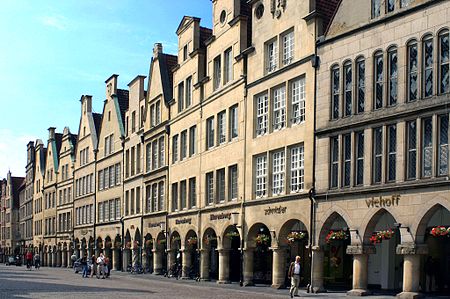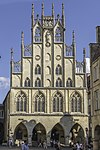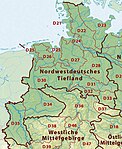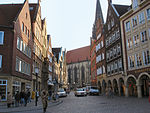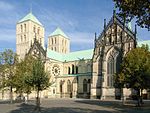Münster Cathedral or St.-Paulus-Dom is the cathedral church of the Catholic Diocese of Münster in Germany, and is dedicated to St Paul. It is counted among the most significant church buildings in Münster and, along with the City Hall, is one of the symbols of the city.
The cathedral stands in the heart of the city, on a small hill called Horsteberg, which is encircled by the Roggenmarkt, Prinzipalmarkt and Rothenburg streets and by the Münstersche Aa river. This area, which also contains the Domplatz and surrounding buildings, was the old Domburg. Today the cathedral is the parish church for this area. West of the cathedral lies the bishop's palace and part of the old curia complex along with the current cathedral chapter.
The cathedral had two predecessors. The first cathedral (called the Ludgerus Dom, 805-1377) stood to the north of the current cathedral; the second cathedral was built in the tenth or eleventh century and was demolished during the construction of the third and current cathedral between 1225 and 1264. The imposing westwerk with its nearly identical towers was built as part of the second cathedral around 1192 and was incorporated into the current building. As a result, the cathedral is a mixture of styles, combining the Romanesque westwerk, old choir, and west towers with the Gothic nave, transepts, high choir and ring of chapels.
Each of the cathedral buildings served as the cathedral church of the Diocese of Münster, but each also had additional functions, at least at times. The original Carolingian cathedral was also the Collegiate church for a monastery founded by Liudger, with the monks living under the rule of Chrodegang. Each cathedral served as a parish church, originally for the whole of Münster. As a result of the foundation of further parish churches, the parish district of the cathedral was reduced to the Old Domburg and Domimmunität in 1090. In the first half of the thirteenth century, the Church of St Jacobi was built on the Domplatz. With the completion of this church, the cathedral, which was then under construction, lost its function as a parish church entirely. Since the demolition of St Jacobi in 1812, the cathedral regained its role as the parish church for the Old Domburg and Domimmunität.
The cathedral contains the tomb of the former Bishop of Münster, Clemens August Graf von Galen who became a Cardinal shortly before his death in 1946 and was beatified by Pope Benedict XVI in 2005.
